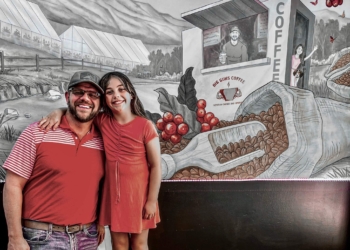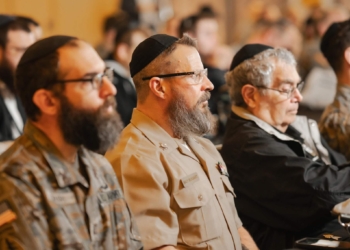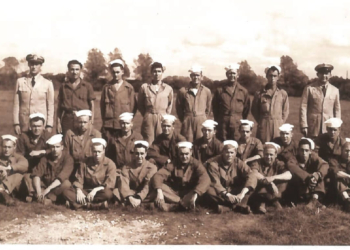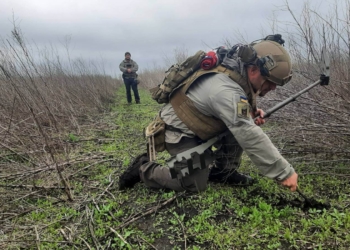When Sidney Moore was five years old, his dog, a border collie named Major, was donated to the Dogs for Defense program. More than 75 years later, the story has been told in the book “Major: A Soldier Dog.”
During World War II, the U.S. military asked civilians to volunteer their dogs for service to be deployed to battlefields and military installations worldwide. More than 17,000 answered the call and donated pets to the program, headquartered at Fort Robinson War Dogs Training Center in Nebraska.
Moore, who is now 82, grew up in rural North Dakota and said Major was often his only playmate. When his family made the decision to donate their dog, the memory stuck with him.
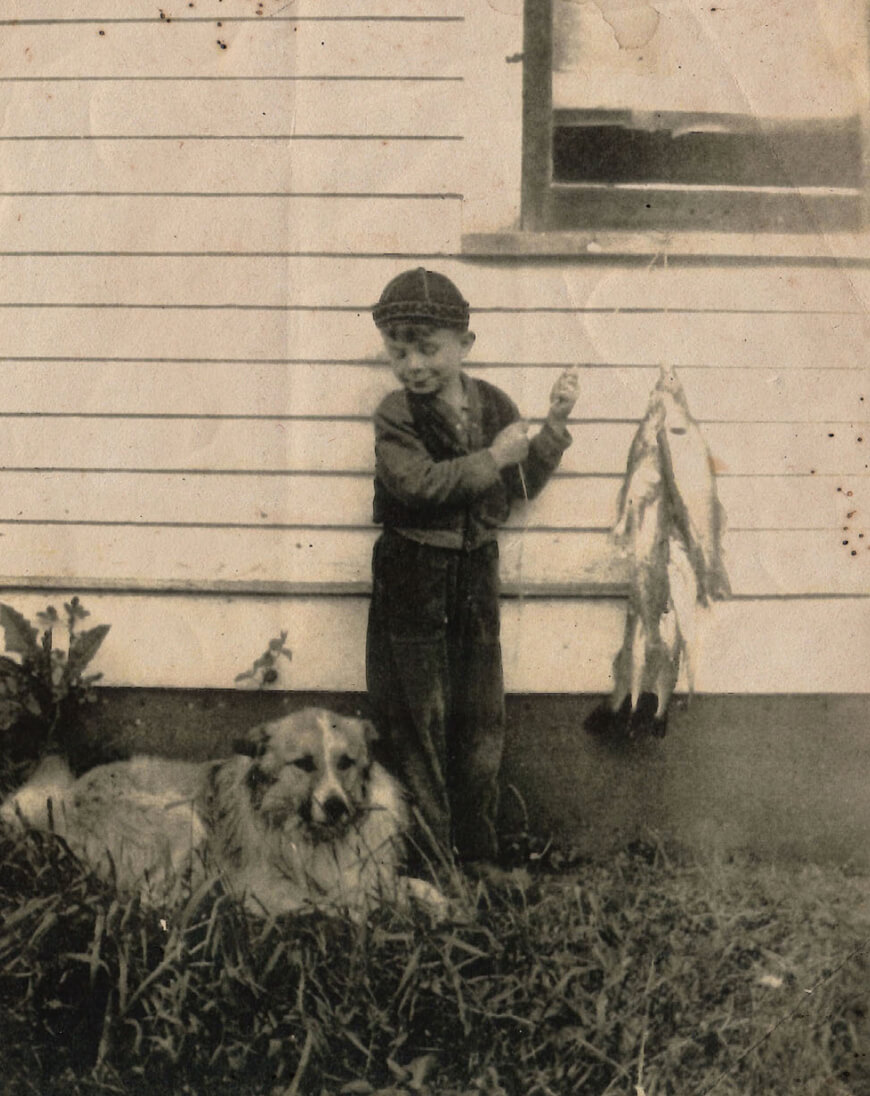
“I still remember the day so vividly, the door slamming shut and the dog being pulled away,” he said. “It was really traumatic.”
Author Trevor Jones, who serves as director and chief executive officer of the History Nebraska, was inspired to write the book after uncovering documents about the program and connecting with Moore.
“I kept thinking this is a story to tell and what better way to do so than through the story of a child and his dog?” Jones said.
Telling the story from the perspective of Major, the book follows the dog through separation from his family to training for deployment, then his harrowing war service in Italy, return home for detraining and finally the reunion with his family. Because the story is told from the dog’s point of view, the words and pictures reflect the way he would perceive the world, relying first on smell, second on hearing and last on sight. Illustrator Ming Hai used colors to show what Major would have smelled and heard to help children understand his world and experiences.

“Many of the illustrations are based on photos from our collections at History Nebraska,” Jones said. “We wanted to make sure that the story was not only captivating but as historically accurate as possible.”
In the beginning, much of the war dog program was trial and error. Jones tells the story of Dalmatian recruits.
“Once they realized they stood out on a battlefield, they dyed them. After the first rain, it became clear it wasn’t the best idea,” he said.

The program was quickly refined in terms of breed, weight and height. It also became the genesis of the modern training still used today. Two key points remain: the dog needs to know the handler is in control and the dog will not function if afraid.
“A key idea is to make the dog a partner with the service member. These ideas are still are the cornerstones of military service dogs today,” Jones said.
As in the story, the real service dogs who survived were shipped back to Fort Robinson and re-trained as pets, then shipped back to their families. The dogs had discharge papers and Moore provided Major’s documentation, which is included in the book.

Major’s homecoming was tough for Moore. “I felt like I had betrayed him. I could hardly look him in the eye,” he said.
Not long after, Major went to live on a family friend’s cattle ranch. Moore ended up never seeing his childhood friend again. Inspired by this childhood experience, Moore always felt a deep sense of patriotism. He went on to serve in the Army, the North Dakota National Guard and later taught history.
Reading “A Soldier Dog” brought back vivid memories for Moore. When the news broke that the war was over, he remembers all of the women in the neighborhood running out into street with sheer jubilation.
“They were crying, laughing and hugging,” he said. Their neighbors included 22-year-old young woman whose husband was fighting for the 101st Airborne Division in Germany.
“That woman, that young wife, she came out with two pans. She was beating those pans up over her head. I remember that quite well,” he said with a chuckle.
Since the publication of the book, Jones speaks to children regularly about the story. “Concepts of patriotism and sacrifice are abstract,” Jones said. “But when you say: ‘Would you give up something you love, like your pet?’ That really makes children think.”
“It’s a great story,” Moore said. “I would like for readers to realize the sacrifices people make during war.”
The book is available for purchase via major retailers and
https://aerbook.com/maker/productcard-4677366-6044.html
















